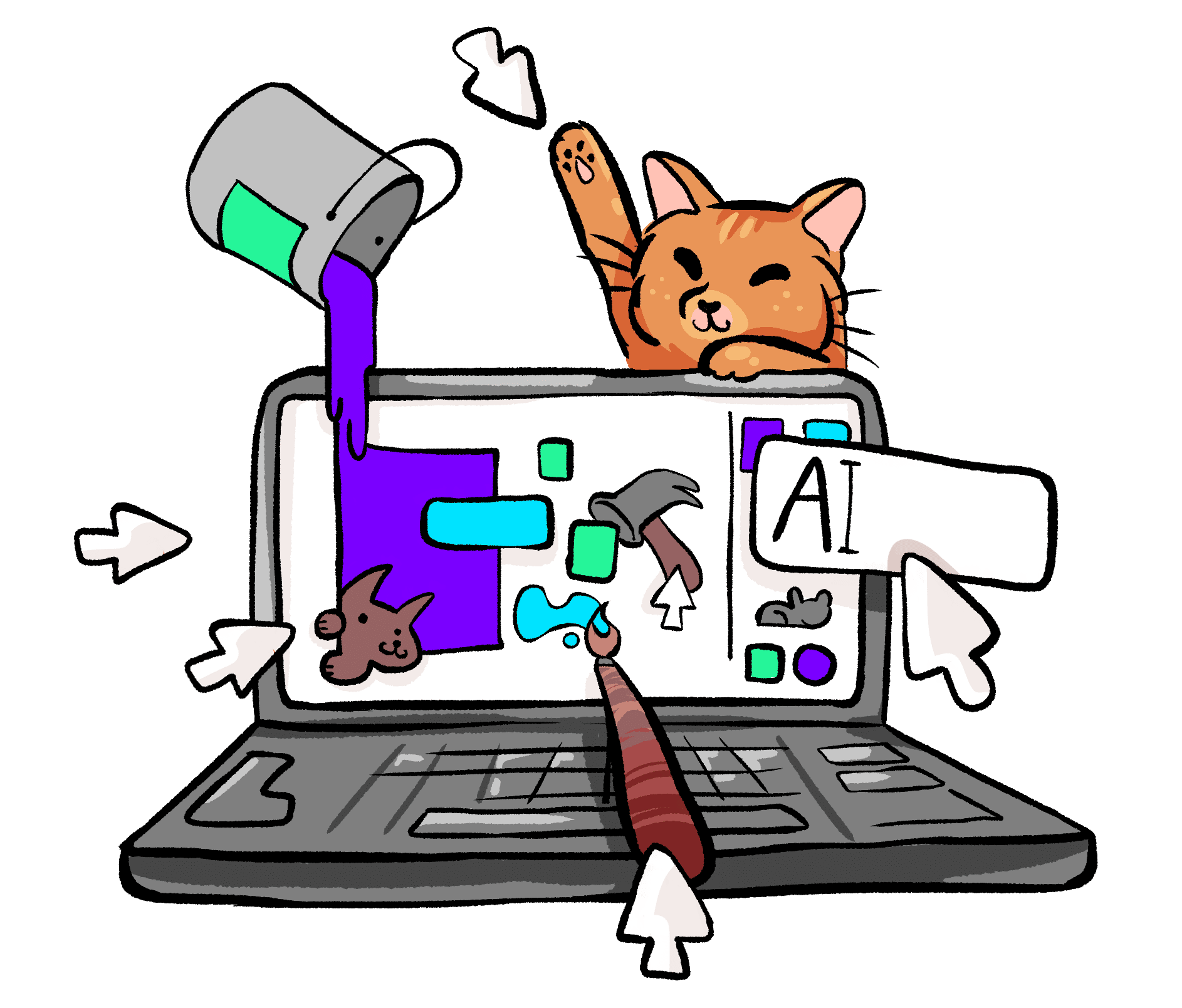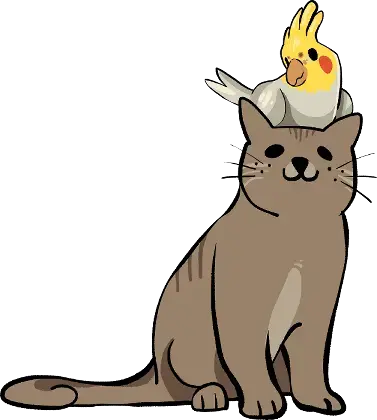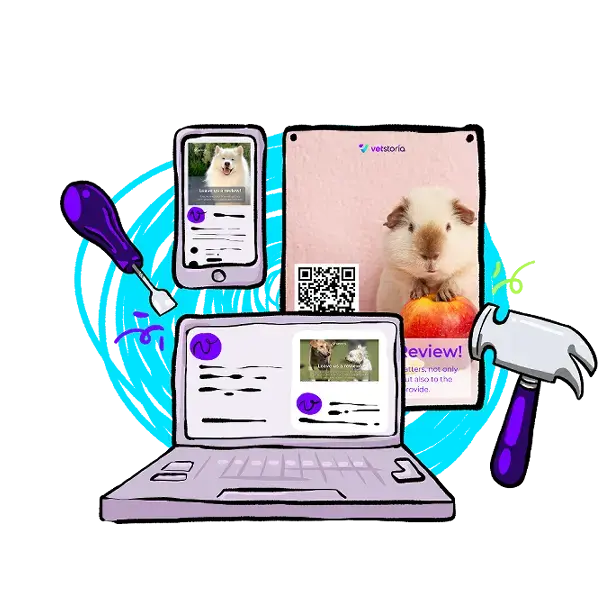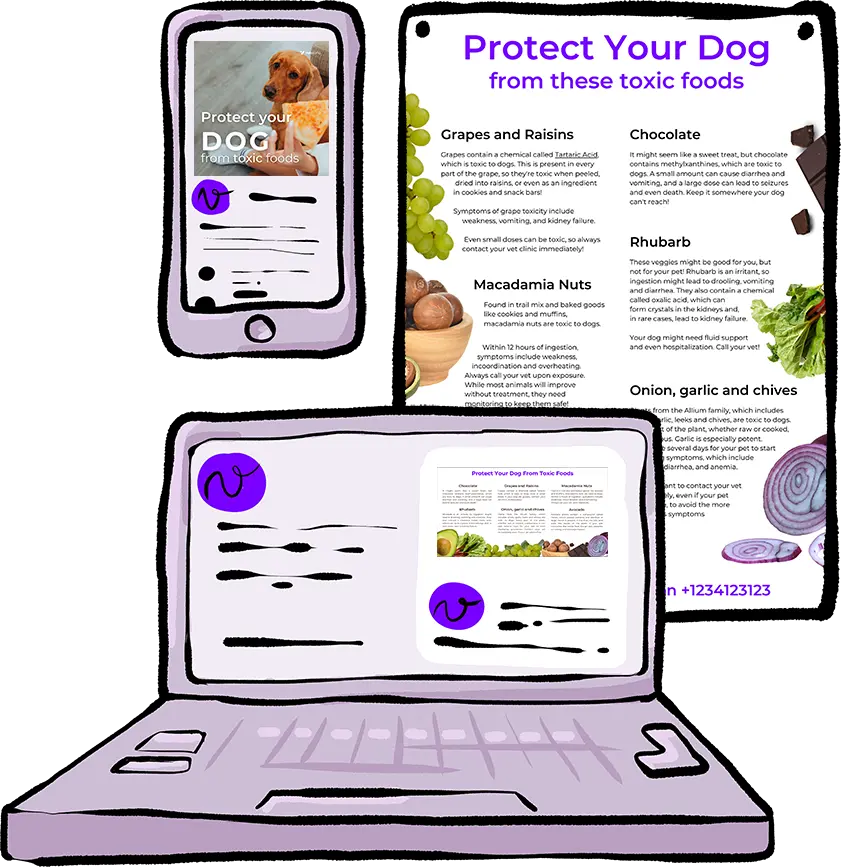Teach pet owners how to keep their dogs safe from Toxic Foods
Prevention is the best medicine! Ensure pet owners steer clear of these toxic foods with these packs. Use these alongside our Pet Poison Prevention Month packs to raise awareness in March. To save you even more time, we’ve included a pre-written email, and suggested captions for each of our social media templates!
Download our ready-to-use social assets:
Or brand the content for your clinic in 3 easy steps

Choose the pack you want, and open the clickable template links

Export the design as it is, or add your logo, brand colors, and update the text

Download the design for your digital channels, or print physical copies!
Customize the assets as you like:
What information is included in the Toxic Foods pack?
Grapes and Raisins – Grapes contain a chemical called Tartaric Acid, which is toxic to dogs. This is present in every part of the grape, so they’re toxic when peeled, dried into raisins, or even as an ingredient in cookies and snack bars! Symptoms of grape toxicity include weakness, vomiting, and kidney failure. Even small doses can be toxic, so make sure to contact your vet clinic immediately!
Chocolate – It might seem like a sweet treat, but chocolate contains methylxanthines, which are toxic to dogs. A small amount can cause diarrhea and vomiting, and a large dose can lead to seizures and even death. Keep it somewhere your dog can’t reach!
Macadamia Nuts – Found in trail mix and baked goods like cookies and muffins, macadamia nuts are toxic to dogs. Within 12 hours of ingestion, symptoms of macadamia nut poisoning in dogs include weakness, incoordination and overheating. Always call your vet upon exposure. While most animals will improve without treatment, they need monitoring to keep them safe!
Rhubarb – Rhubarb is a veggie that might be good for you, but not for your pet! Rhubarb is an irritant, so ingestion might lead to drooling, vomiting and diarrhea. Rhubarb also contains a chemical called oxalic acid, which can form crystals in the kidneys of dogs and, in rare cases, lead to kidney failure. Your dog might need fluid support and even hospitalization, so call your vet!
Onion, garlic and chives – Plants from the Allium family, which includes onion, garlic, leeks and chives, are toxic to dogs. Every part of the plant, whether raw or cooked, is poisonous. Garlic is especially potent.
When eaten, especially in high quantities, onion and garlic damage your pet’s blood cells. It can take several days for your pet to start displaying symptoms, which include vomiting, diarrhea, and anemia.
It’s important to contact your vet immediately after they consume garlic or onion, even if your pet seems fine, so that the vet can clear the stomach to avoid the more dangerous symptoms. If your pet is already showing symptoms, they will be accompanied until their body can clear the toxic compound.
Avocado – Avocado plants contain a compound called Persin, which causes vomiting and diarrhea in dogs. Persin is present in the fruit, the pits, and even the leaves of the plant. If your pet consumes the whole fruit, the pit also presents a choking and blockage hazard.
Most pets recover fully, but might require monitoring while they do!
- Don’t feed your pet human foods, unless you are sure they are safe for pets. A lot of foods that are tasty treats for us, are life-threatening to our pets.
- Tell guests to not feed your pet, as they might not know what foods are safe or not.
- Learn more about what foods are unsafe for pets to consume.
- Keep food and ingredients out of your pet’s reach. Dispose of any leftover food in a covered trash can, preferably somewhere your pet doesn’t have access to.
Our Content Pack Calendar has all the marketing assets you need for the rest of the year neatly mapped onto a calendar. It’s been specially designed to help you have the most engaging, productive, and profitable quarter yet for your veterinary clinic. Download 2023 Q4 calendar here!

Get Vetstoria Content Packs direct to your Inbox
Vetstoria users get more, with online booking links and QR codes

Build online booking campaigns
Create promotional booking campaigns (like free dental check ups!) that follow set scheduling rules based on your preferred dates, the availability of vets, and more!

Add trackable booking links and QR codes
Use trackable links in emails, SMS, social profiles, online ads and in the clinic to promote your campaigns and easily measure the results.

Use analytics to optimize results
See how many appointments and new clients are generated from each campaign, and learn which channels are most effective.

Build online booking campaigns
Create promotional booking campaigns that follow set scheduling rules based on preferred dates, the availability of vets, and more!

Add booking links to digital channels
Use trackable booking links in emails, SMS, social profiles, and online ads to promote your campaigns and easily measure the results.

Use analytics to optimize results
See how many appointments and new clients are generated from each campaign, and learn which channels are most effective.


